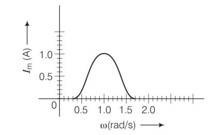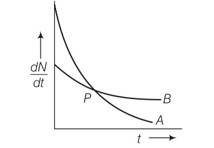Physics Ncert Solutions Class 12th
Get insights from 1.2k questions on Physics Ncert Solutions Class 12th, answered by students, alumni, and experts. You may also ask and answer any question you like about Physics Ncert Solutions Class 12th
Follow Ask QuestionQuestions
Discussions
Active Users
Followers
New answer posted
4 months agoContributor-Level 10
This is a short answer type question as classified in NCERT Exemplar
In the figure
Band width = w2-w1 where these two corresponds to frequencies at which magnitude of current is 1/ times of maximum value
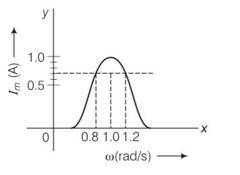
Irms= = 1/ = 0.7A
From the diagram the corresponding frequencies are 0.8 and 1.2rad/s
New answer posted
4 months agoContributor-Level 10
This is a Short Answer Type Questions as classified in NCERT Exemplar
Explanation- As per the given question, monochromatic light emerging from polaroid (I) is plane polarised. When polaroid (II) is placed infront of this polaroid (I), and rotated till no light passes through polaroid (II), then (I) and (II) are set in crossed positions, i.e., pass axes of I and II are at 90°.
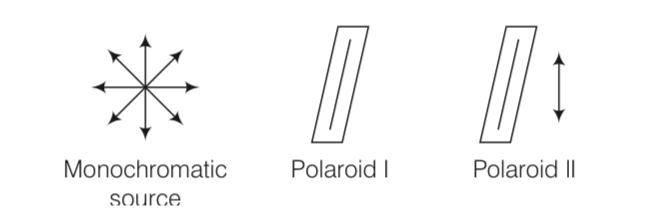
Consider the above diagram where a third polaroid (III) is placed between polaroid (I) and polaroid II.

When a third polaroid (III) is placed in between (I) and (II), no light will emerge from (II), if pass axis of (III) is parallel to pass axis of (I) or (II). In
New answer posted
4 months agoContributor-Level 10
This is a Short Answer Type Questions as classified in NCERT Exemplar
Explanation- angular resolution of the eye? = 5.8 x 10-4
linear distance between two dots is l= 2.54/300=0.84 10-2cm
? = l/z
z=l/? = = 14.5cm
New answer posted
4 months agoContributor-Level 10
This is a Short Answer Type Questions as classified in NCERT Exemplar
Explanation- As we know that the frequencies of sound waves lie between 20 Hz to 20 kHz so that their wavelength ranges between 15 m to 15 mm. The diffraction occur if the wavelength of waves is nearly equal to slit width.
As the wavelength of light waves is 7000 *10-10 m to 4000 10-10m. The slit width is very near to the wavelength of sound waves as compared to light waves. Thus, the diffraction of sound waves is more evident in daily life than that of light waves.
New answer posted
4 months agoContributor-Level 10
This is a Short Answer Type Questions as classified in NCERT Exemplar
Explanation- We know that the sun is at very large distance from the earth. Assuming sun as spherical, it can be considered as point source situated at infinity. Due to the large distance the radius of wavefront can be considered as large (infinity) and hence, wavefront is almost plane.
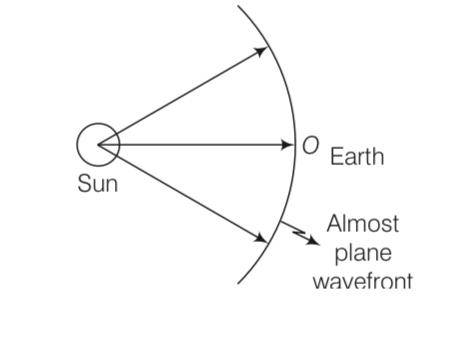
New answer posted
4 months agoContributor-Level 10
This is a short answer type question as classified in NCERT Exemplar
E=E0sinwt
And current I=I0sin (wt )
Power, P= EI = E0sinwt = E0I0sinwtsin (wt+ )
= [cos ]………… (1)
Pav= cos =VrmsIrmscos ………. (2)
From eqn 1 ……But when cos < cos (2wt+
P<0 power can be nagative of an AC source
From eqn 2……… Pav>0
cos =R/Z>0 average power can not be negative
New answer posted
4 months agoContributor-Level 10
This is a Multiple Choice Questions as classified in NCERT Exemplar
Answer- (c, d)
Explanation- in given figure the slope of curve A is greater than slope B. so decay in A is faster than B . also wavelength of A is grater than B.
New answer posted
4 months agoContributor-Level 10
This is a Short Answer Type Questions as classified in NCERT Exemplar
Explanation- The point image I1, due to L1 is at the focal point. Now, due to the converging lens L2, let final image formed is I which is point image, hence the wavefront for this image will be of spherical symmetry.
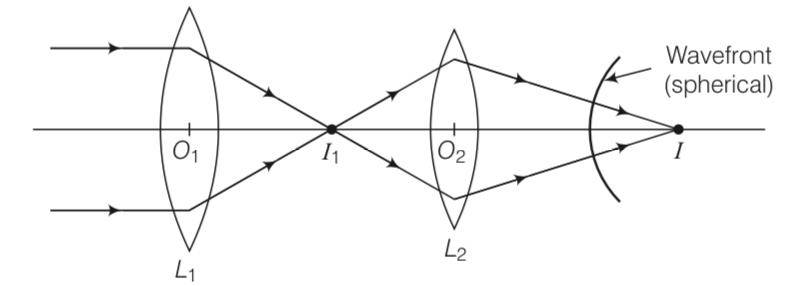
New answer posted
4 months agoContributor-Level 10
This is a Short Answer Type Questions as classified in NCERT Exemplar
Explanation- When we are considering a point source of sound wave. The disturbance due to the source propagates in spherical symmetry that is in all directions. The formation of
wavefront is in accordance with Huygen's principle.
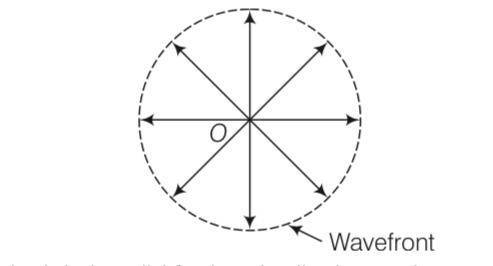
So, Huygen's principle is valid for longitudinal sound waves also.
New answer posted
4 months agoContributor-Level 10
This is a Multiple Choice Questions as classified in NCERT Exemplar
Answer- (b, d)
Explanation- this is only possible when rate of decay of 1 is almost double the rate of decay of other.so in this case initial decay of A must be twice of B. also Initial rate of decay of B is same as the rate of decay of A at t = 2h and λA < B
Taking an Exam? Selecting a College?
Get authentic answers from experts, students and alumni that you won't find anywhere else
Sign Up on ShikshaOn Shiksha, get access to
- 65k Colleges
- 1.2k Exams
- 686k Reviews
- 1800k Answers

